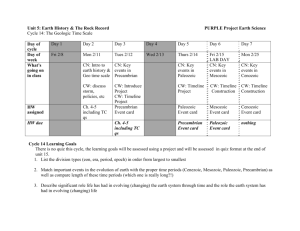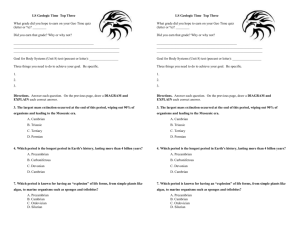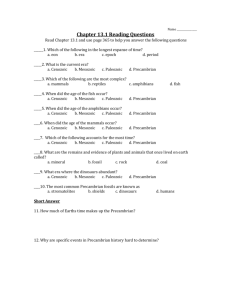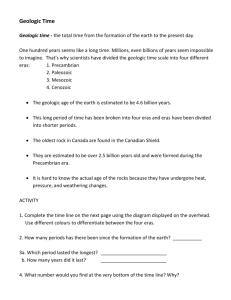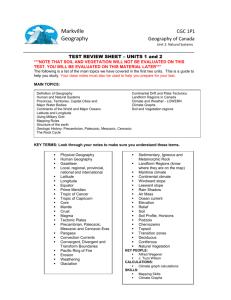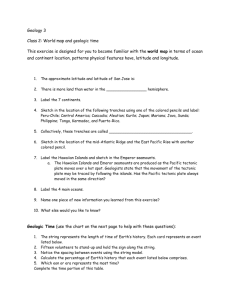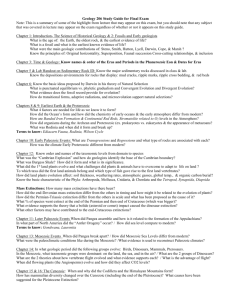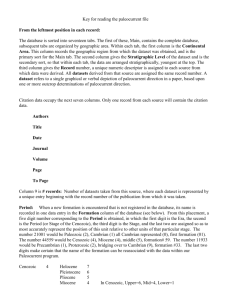ROCKS AND MINERALS QUIZ
advertisement
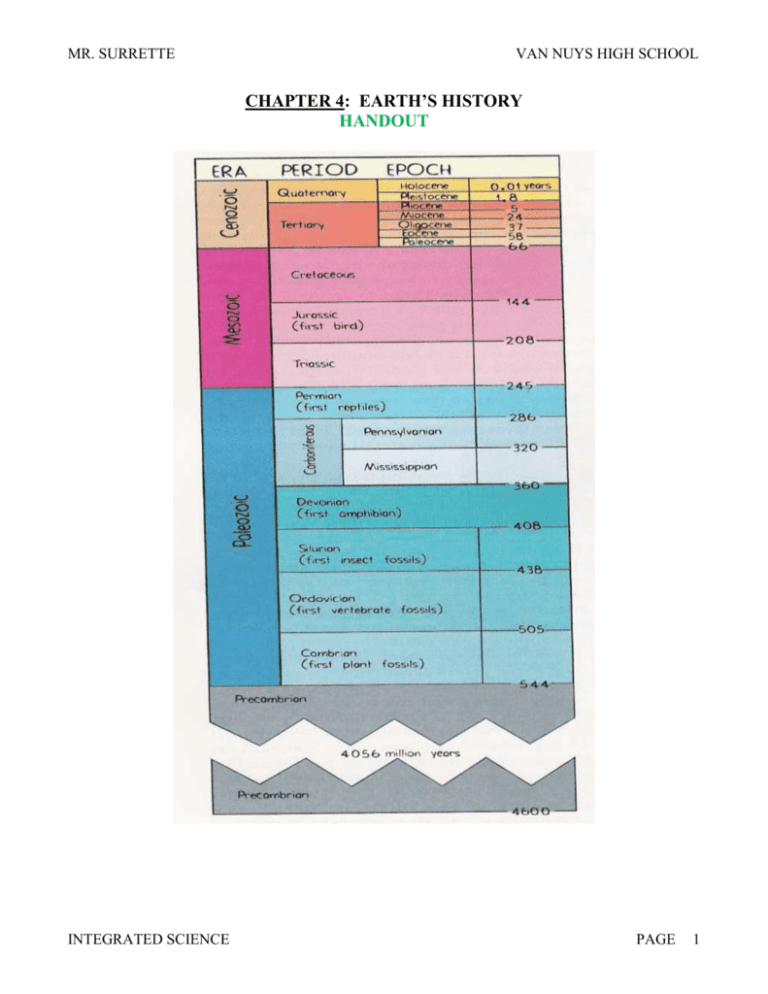
MR. SURRETTE VAN NUYS HIGH SCHOOL CHAPTER 4: EARTH’S HISTORY HANDOUT INTEGRATED SCIENCE PAGE 1 MR. SURRETTE VAN NUYS HIGH SCHOOL CHAPTER 4: EARTH’S HISTORY WORKSHEET 1. __________ is/are when pieces of one rock type are found in another. (A) Original horizontality (B) Cross cutting (C) Inclusions (D) Faunal succession (E) Formation 2. Sometimes the rock record is incomplete or out of order. This creates: (A) original horizontality (B) faunal succession (C) unconformities (E) inclusions (D) fossils 3. Atoms of the same element that contain different numbers of neutrons are called: (A) protons (B) isotopes (C) isomers (D) electrons (E) nuclei 4. __________ is used to date organic matter within the last 50,000 years. (A) Carbon (B) Nitrogen (C) Uranium (D) Plutonium (E) Iron 5. The __________ era ended 66 million years ago. (A) Paleozoic (B) Mesozoic (C) Cenozoic (D) Precambrian (E) Cambrian 6. We live in the __________ era. (A) Paleozoic (B) Mesozoic (C) Cenozoic (E) Cambrian (D) Precambrian 7. The __________ period encouraged the development of terrestrial plants. (A) Cambrian (B) Ordovician (C) Silurian (D) Divonian (E) Carboniferous 8. We currently live in the __________ period. (A) Silurian (B) Permian (C) Ordovician (D) Cenozoic (E) Mesozoic 9. Layers of sediment are deposited evenly. Each new layer deposits on top of older sediment. This is called: (A) original horizontality (B) cross-cutting (C) inclusion (D) faunal succession (E) formation 10. The preserved evidence of ancient life are called: (A) remnants (B) bones (C) skin (D) formations (E) fossils 11. The remains of the activities of plants and animals like tracks, trails, or scratch marks are __________ fossils. (A) index (B) body (C) radiometric (D) bone (E) trace 12. Radiometric dating with __________ is useful for very old rocks. (A) carbon (B) lead (C) uranium (D) plutonium (E) iron 13. The total disappearance of a species is called: (A) survival of the fittest (B) evolution (C) Darwinism INTEGRATED SCIENCE (D) endangered (E) extinction PAGE 2 MR. SURRETTE 15. The __________ period marks the appearance of vertebrates. (A) Cambrian (B) Ordovician (C) Silurian (D) Divonian VAN NUYS HIGH SCHOOL (E) Carboniferous 16. The “age of dinosaurs” took place during the __________ period. (A) Silurian (B) Permian (C) Ordovician (D) Cenozoic (E) Mesozoic 17. The evolution of life on Earth is recorded in the fossil record. This is called: (A) original horizontality (B) cross-cutting (C) inclusion (D) faunal succession (E) formation 18. Fossils of wide spread organisms that lived for only short interval of geologic time are called: (A) index (B) radiometric (C) body (D) bone (E) skin 19. The _________ era began 544 million years ago and ended 245 million ago. (A) Paleozoic (B) Mesozoic (C) Cenozoic (D) Precambrian (E) Cambrian 20. The __________ era lasted from 4.6 billion years ago to 544 million years ago . (A) Paleozoic (B) Mesozoic (C) Cenozoic (D) Precambrian (E) Cambrian INTEGRATED SCIENCE PAGE 3
